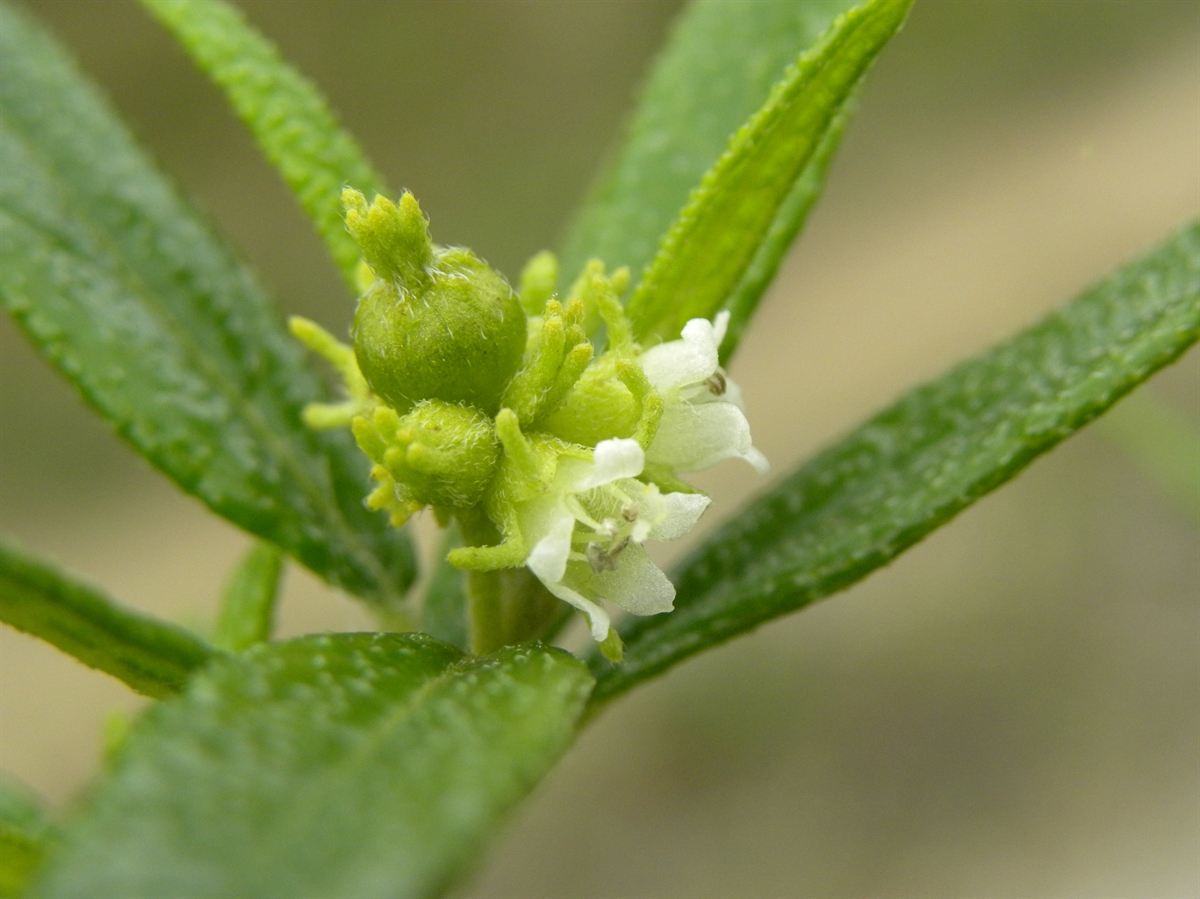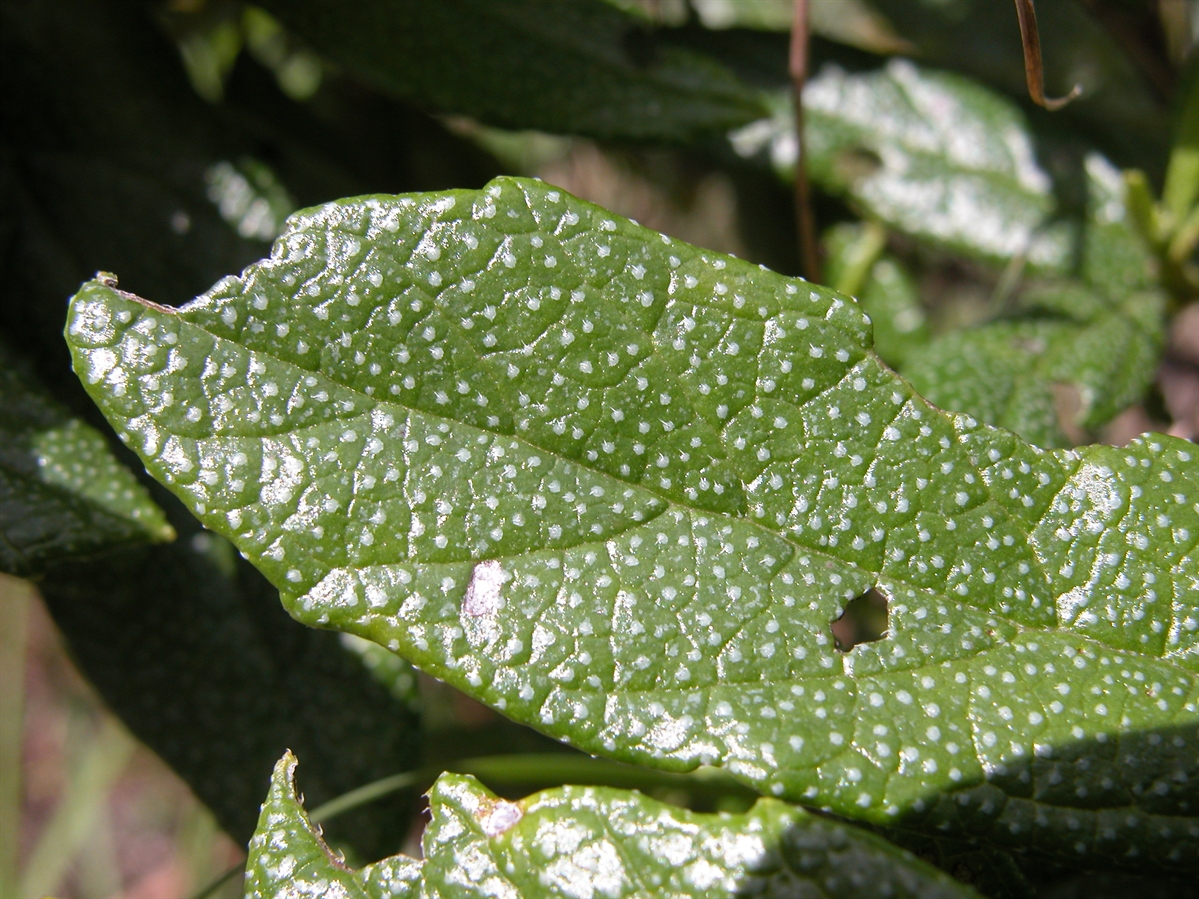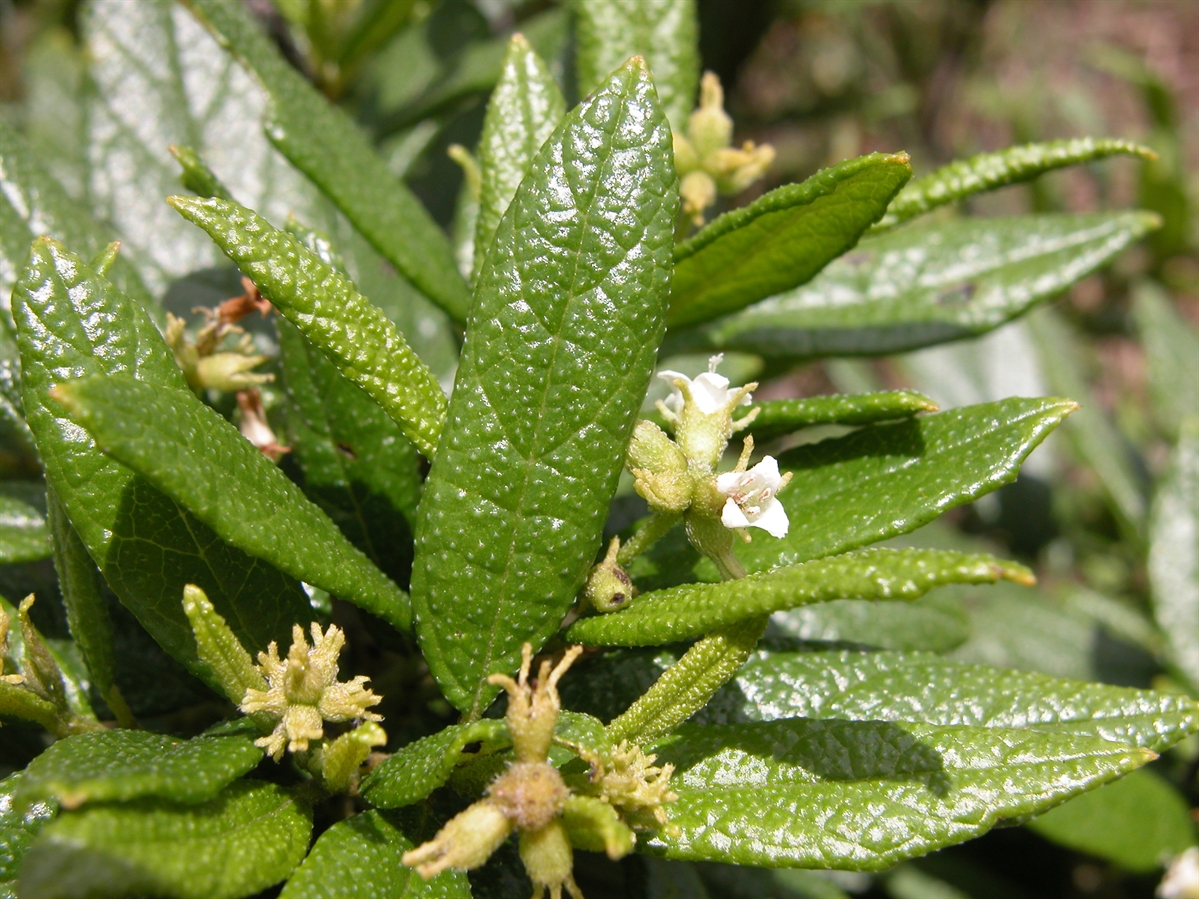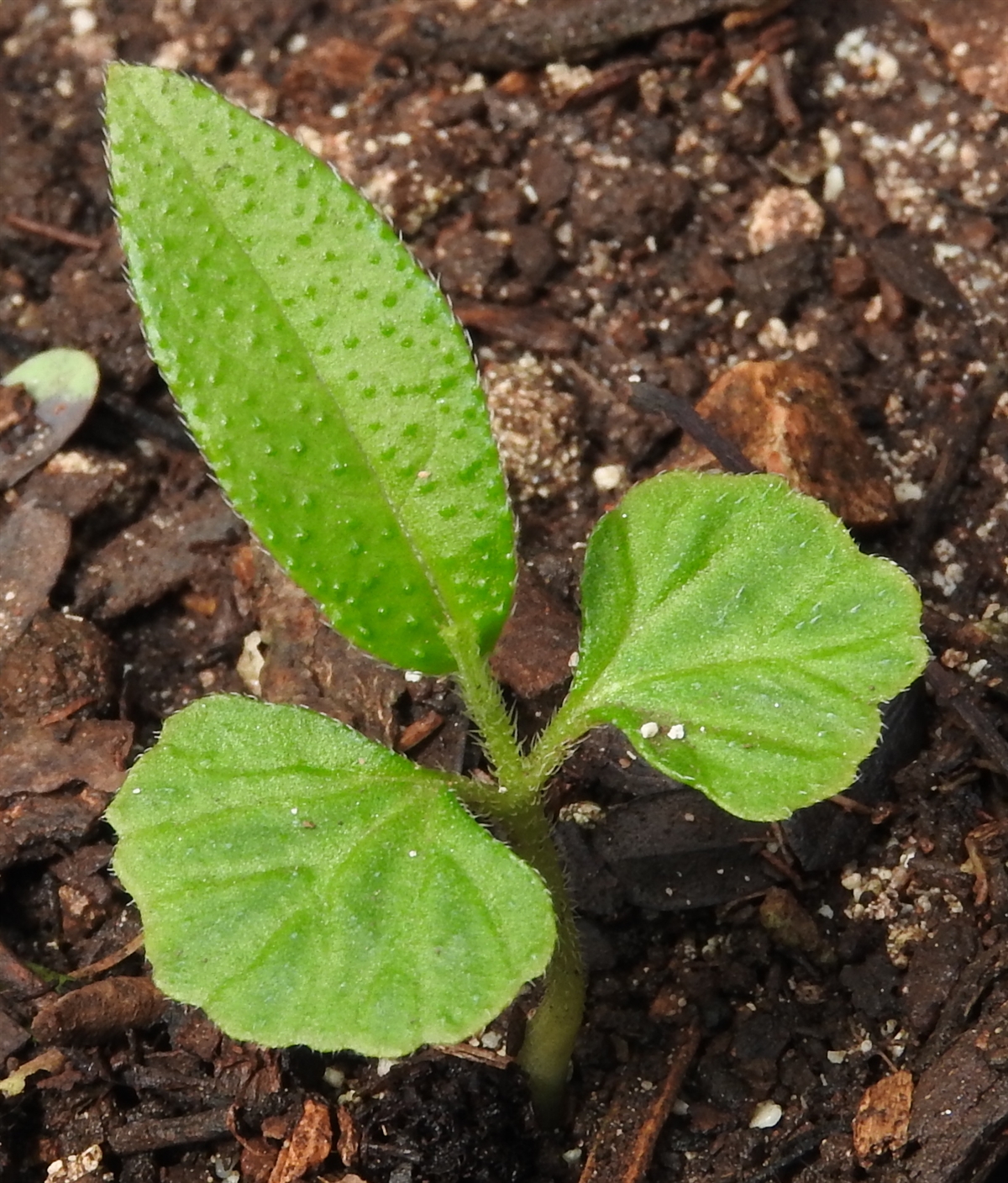Habit: Varronia bahamensis grows as a shrub to small tree up to 4 m in height. The bark is black with whitish lenticels. The leaves are arranged alternately and are linear to elliptic in shape. The leaves are up to 10 cm in length (usually shorter) with a leaf margin that ranges from entire to slightly toothed. The surfaces of the leaves are covered with scabrous scales.
The complete, perfect, actinomorphic flowers are arranged in heads. The calyx has 5 sepals that are fused into a cup that is covered with hairs. The corolla has 5 white petals that are fused into a cup. There are 5 stamens that are attached to the rim of the corolla. The ovary is superior with 4 locules and ovules. The fruit is a drupe that turns red at maturity.
Habitat: Varronia bahamensis grows in Dry Broadleaf Evergreen Formations (coppice), primarily in shrublands as well as in Pine Woodlands.
Distribution: Varronia bahamensis occurs on all islands in the Lucayan Archipelago as well as southern Florida and Cuba.
Medicinal/Cultural/Economic usage: Varronia bahamensis has been used medicinally in the Lucayan Archipelago to treat obstetric and gynecological issues, pain, circulatory problems, and stop infections. It has been introduced into the horticultural trade. It is attractive to birds and butterflies and in the northern Bahamas it attracts the Atala Butterfly.




